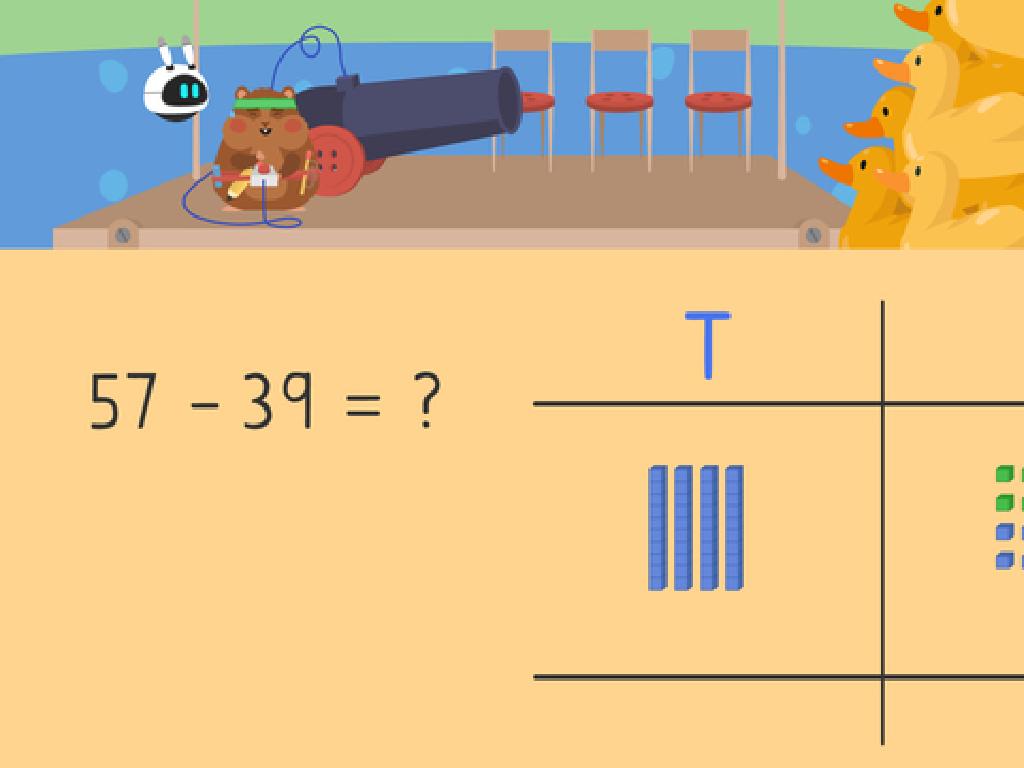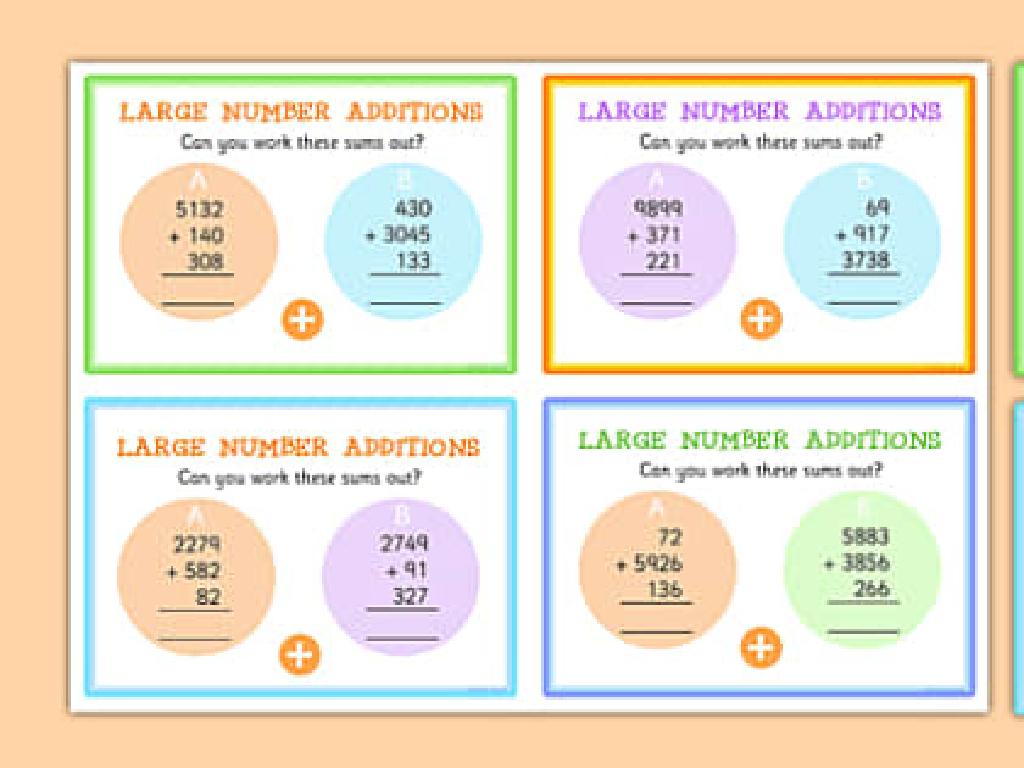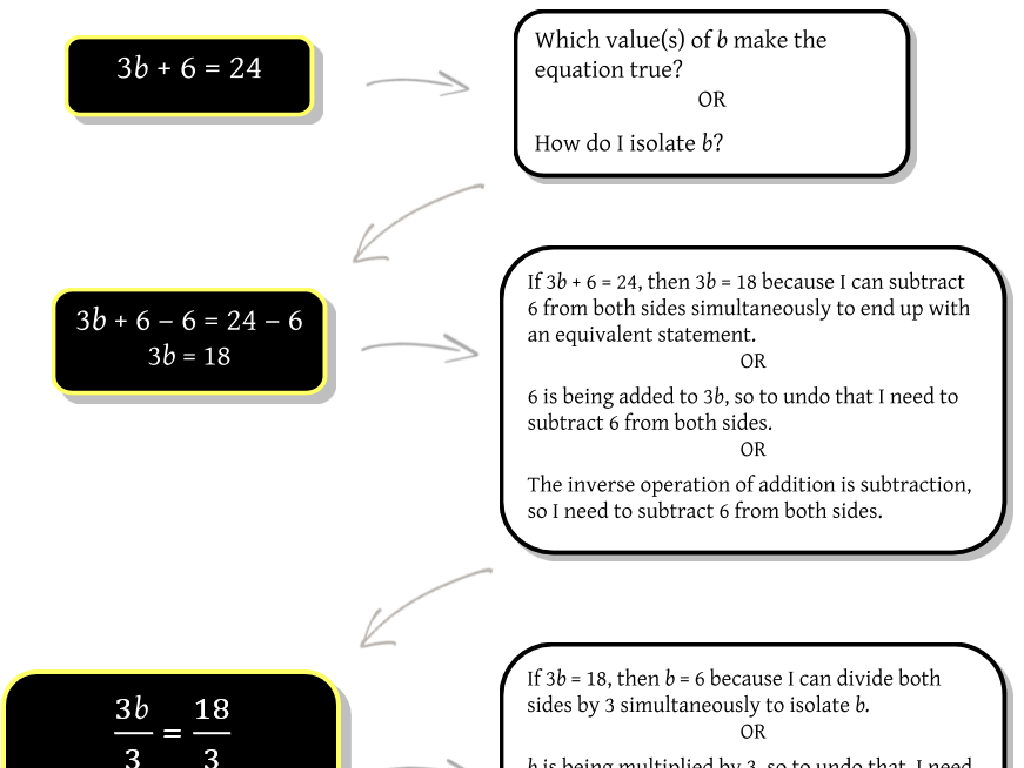Find The Slope From Two Points
Subject: Math
Grade: Seventh grade
Topic: Slope
Please LOG IN to download the presentation. Access is available to registered users only.
View More Content
Introduction to Slope: Connecting Concepts
– Explore slope in real life
– Slope is seen in ramps, roofs, and even slides.
– Define slope mathematically
– Slope is the steepness of a line, a ratio of rise over run.
– Discuss slope significance
– Understanding slope is crucial for graphing equations.
– Apply slope to scenarios
– How does slope determine a path’s difficulty for biking?
|
This slide introduces the concept of slope, aiming to help students recognize slope in the world around them and understand its mathematical definition. Start by discussing how slope appears in everyday life, such as in the incline of a ramp or the pitch of a roof. Then, define slope as the measure of the steepness of a line, expressed as a ratio of the vertical change (rise) to the horizontal change (run) between two points on the line. Emphasize the importance of slope in various areas of mathematics, including graphing linear equations and understanding geometric relationships. Encourage students to think of real-world scenarios where slope is a factor, such as in determining the difficulty of a bike path, to make the concept more relatable and concrete.
Understanding Slope: Rise over Run
– Slope: Measure of steepness
– Slope indicates how steep a line is on a graph.
– ‘Rise over Run’ explained
– ‘Rise’ is vertical change, ‘Run’ is horizontal change.
– Graphing slope visually
– Use graph paper to plot points and see slope.
– Positive vs Negative Slope
– Positive slope goes up, negative slope goes down.
|
The concept of slope is fundamental in understanding linear relationships in mathematics. Slope is defined as the ratio of the vertical change (rise) to the horizontal change (run) between two points on a line. When visualizing slope on a graph, students should be able to identify whether the slope is positive or negative based on the direction of the line. Positive slopes rise upwards from left to right, while negative slopes decrease in value. Encourage students to practice by plotting points and drawing lines on graph paper, calculating the slope, and determining if it’s positive or negative. This will help them grasp the concept of slope intuitively.
Calculating Slope from Two Points
– Understand the slope formula
– Slope formula is (y2 – y1) / (x2 – x1)
– Learn to identify coordinates
– Coordinates are points: (x1, y1), (x2, y2)
– Example: Line through (2, 3) & (4, 6)
– Slope of line through (2, 3) and (4, 6)
– Calculate the slope step-by-step
– Use the formula to find the slope value
|
This slide introduces the concept of finding the slope of a line when given two points. The slope formula, (y2 – y1) / (x2 – x1), is a crucial tool for this. Students should learn how to identify and label coordinates as (x1, y1) for the first point and (x2, y2) for the second point. Using the example provided, demonstrate how to plug the coordinates into the slope formula to calculate the slope. Walk through each step, showing the subtraction of the y-coordinates and x-coordinates, followed by the division to find the slope. This example will help students understand the process and prepare them to solve similar problems on their own.
Practice: Calculating Slope from Points
– Calculate slope from point pairs
– Use the formula (y2 – y1) / (x2 – x1)
– Discuss results with a classmate
– Share your approach and compare answers
– Recognize zero and undefined slopes
– Zero slope: horizontal line, Undefined: vertical line
– Solve practice problems together
|
This slide is designed for a collaborative classroom activity where students will apply their knowledge of slopes to calculate the slope from given pairs of points. They will use the slope formula (change in y over change in x) to find the slope. After individual work, students should discuss their findings with a neighbor to reinforce their understanding and correct any misconceptions. Additionally, students will identify special cases of slope: zero slope, which represents a horizontal line, and undefined slope, which represents a vertical line. The teacher should circulate the room, providing guidance and ensuring that students understand the concepts. Possible activities include creating a worksheet with various pairs of points, encouraging students to graph the points and visually identify the slope, and discussing how slope relates to the steepness of a line.
Real-life Applications of Slope
– Slope in road construction
Slope ensures roads are safe and drivable, especially on hills.
– Designing ramps using slope
Ramps require a gentle slope for accessibility.
– Slope’s role in daily life
From bike paths to skateboarding, slope impacts many activities.
– Understanding slope benefits
|
This slide aims to show students how the concept of slope is not just a mathematical idea but a practical tool used in everyday life. When constructing roads, engineers must calculate the slope to ensure safety and manageability, particularly in hilly or mountainous areas. In designing ramps, the slope is crucial to make them accessible, adhering to standards for people with disabilities. Students should recognize how slopes affect various activities they might engage in, such as biking or skateboarding, where the steepness of a slope can change the difficulty level. Encourage students to think of other areas where slope is important and discuss how understanding slope can help solve real-world problems.
Class Activity: Slope Scavenger Hunt
– Find slopes around the school
– Measure and calculate the slope
– Use a ruler for straight lines like stairs, and count the rise over run
– Present your findings
– Share the slopes you ve found with classmates
– Reflect on the activity
– Think about where else you see slopes in real life
|
This interactive activity is designed to help students apply their knowledge of slopes to the real world. Students will search for examples of slopes around the school, such as stairs and ramps, and use a ruler or measuring tape to calculate the slope by finding the ‘rise’ over the ‘run.’ After gathering their data, students will present their findings to the class, explaining how they measured and calculated the slope. This will not only reinforce their understanding of the concept but also improve their presentation skills. As a teacher, prepare to provide guidance on how to measure accurately and ensure safety while students are on the move. Possible variations of the activity could include working in pairs, creating a slope gallery walk with pictures and calculations, or even using smartphone apps to measure angles.






